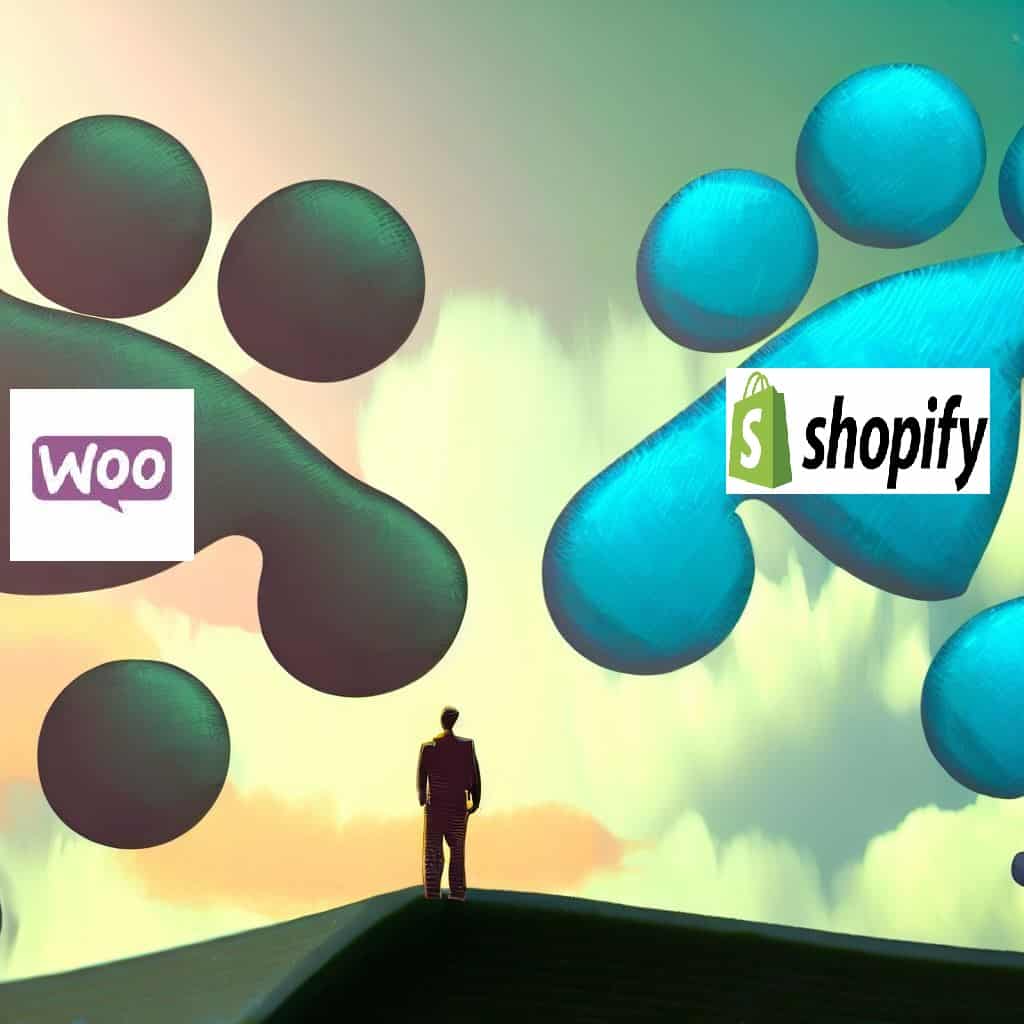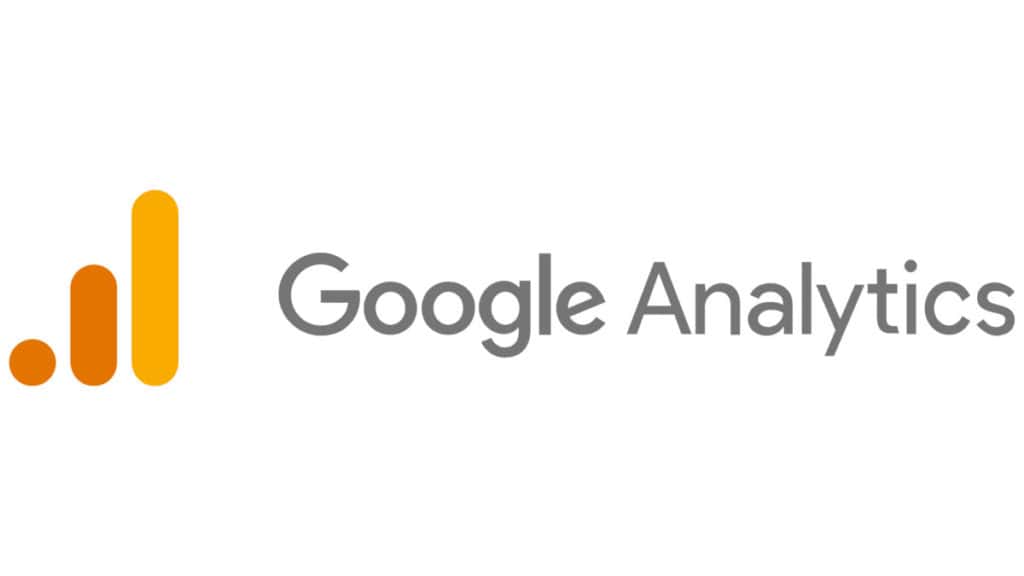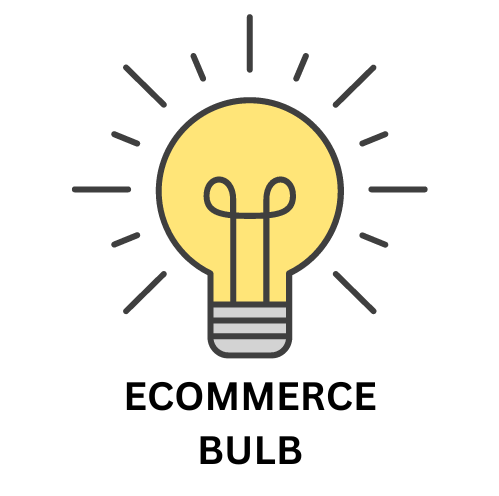
WooCommerce Vs. Shopify, Which is Better eCommerce Platform?
In order to decide which ecommerce platform to use, Shopify vs. WooCommerce. There are many factors that you have to take into consideration. If you want to decide which eCommerce platform to choose, there are many things to consider.
These are some examples of these factors:
- Cost.
- SEO friendliness.
- Page load speed.
- Canonical website URL.
- Indexing Control.
- Customizable HTML capabilities.
- Sitemap Generator.
- Integration with Google Analytics.
- Product Tagging and Categorization.
- Batch Uploading.
- Mobile Optimization.
- Built-in Blogging and Marketing Features.
- Social Sharing Buttons.
- Content Management Capabilities.
- Discount and promotion code tools.
- Easy to use Checkout.
- Reporting tools and custom reports.
- Integration of email marketing tools.
- Multiple payment options.
- Flexibility to add new eCommerce features.
- Exclusive features.
- Cons and pros.
See Also: Why Choose Shopify Over BigCommerce?

Price (Shopify Vs. WooCommerce):

WooCommerce is a free ecommerce platform. You can download and use the core WooCommerce without any charges. Yet there are some extra costs:
- Domain name: In order to have an eCommerce store, you’ll need to buy a domain name for your WooCommerce-operated store. An average domain name costs around $10-$20 per year.
- Web hosting: Web hosting is necessary for your WooCommerce-operated eCommerce store. Web Hosting is the service that will save your website’s files and enables your website visitors to browse it on the World Wide Web. The cost of this service varies between providers and plans. Web hosting cost can be around $10-$20 per month.
- Plugins, Templates and Themes: WooCommerce has a variety of free and paid themes, templates & plugins. The cost of themes and plugins can add up according to your needs and desires.
- Payment gateways: If you have an eCommerce store, you’ll need a payment gateway service. Payment gateways will take a transaction fee. The transaction fee depends on your plan and service provider.
WooCommerce also offers three paid plans: Starter, Plus, and Pro. The cost of these plans will start from $6.95/month up to $31.99/month.

In Shopify, the price starts from $32 for the basic plan and goes up to (The Advanced Plan) with a price tag of $399.
Do not forget that, in Shopify, you’ll need to buy apps, themes, and designs. You might also need to purchase some services like a domain name and -in some cases- web hosting services.
These costs will add up as WooCommerce.
Why WooCommerce over Shopify price wise?
So, price wise, WooCommerce wins because it has a free starting plan that Shopify does not have.
SEO Capabilities (Shopify Vs. WooCommerce):

WooCommerce SEO:
To give a short answer: Yes, WooCommerce is a good platform regarding search engine optimization (SEO). With WordPress being its foundation, you can be confidence it is SEO-friendly. WooCommerce also provide many features that ready your eCommerce store for search engines. Some features that WooCommerce provide as a default service:
- Unique product URLs: WooCommerce creates unique URLs for each product and category.
- Product categories and tags: WooCommerce allows you to create categories & tags for your products. Tagging and categorization help search engines understand what your store is about.
- Product descriptions: WooCommerce enables you to write detailed product descriptions. Product description is an essential part of SEO-friendly websites & they are crucial for ranking in search.
- Sitemaps: WooCommerce generates sitemaps, which help search engines spiders surf your website.
- SSL certificate: WooCommerce supports SSL certificates. SSL certificates are vital for both SEO and security.
Shopify SEO:
Shopify is not SEO-friendly by nature. It needs customization, optimization, and a lot of work.
Some of features that Shopify offers are:
- Automatic sitemaps: Sitemaps are files that tell the structure and content of a website. To make it easier for search engines to crawl and index your pages.
- URL’s editability: You can edit the URLs of pages, products, collections, blogs, and articles. Achieving relevancy to your keywords is of great importance.
- URL optimization: Shopify adds canonical tags to your pages. These tags are crucial in preventing duplicate content issues by redirecting old URLs to new ones in the case of any change.
- SSL certification: Shopify provides a free SSL certificate for your website. They do that by encrypting data between your website and your customers. Improving customer trust, besides boosting your SEO rank.
- Mobile friendliness: Shopify themes are responsive. They adhere to the mobile-first rule. These factors will make SEO performance and user experience better. As you know, mobile friendliness is a ranking factor for Google.
SEO-Friendliness WooCommerce Vs. Shopify:
It’s hard to decide which one is better.
Shopify Vs. WooCommerce as eCommerce platforms in the field of SEO-friendliness is not an easy task to do.
I’ll give WooCommerce a slight advantage for ease of use. Because of the WordPress features that WooCommerce get to make your SEO perfection easier.
PageLoad Speed (Shopify Vs. WooCommerce):

Shopify:
Page load speed is the time it takes for a webpage to load on a user’s browsing device. It is a crucial parameter as a slow-loading page can lead to diminished user engagement. Slow loading websites will also affect engagement and sales.
Shopify is a known ecommerce platform that offers a plethora of traits. One of the main traits of Shopify is the effort to increase page load speed. Shopify’s platform designers wanted it to deliver fast performance. The platform also offers some tools and settings to increase page load speed.
Many factors can affect the page load speed of a Shopify store. Some of these factors are:
-Theme and apps in-use.
-The size and number of images on the page.
– The average user’s internet connection speed.
There are some things that businesses can do to improve the page load speed of their Shopify store, such as:
- Using light themes.
- Image Size Compression.
- Using lazy loading for images
- Minimizing the number of third-party apps.
- Using a content delivery network (CDN)
WooCommerce:
The average page load speed for a WooCommerce store is 3.2 seconds. Woocommerce platform average speed is slower than the average page load speed for all websites, which is 2.8 seconds. Shopify beats that with an average of 2.4 seconds.
Yet, there are some factors that can affect the page load speed of a WooCommerce store.
-Theme and plugins in-use.
-The size and number of images on the page.
-User’s internet connection average speed.
Google recommends that businesses aim for a page load speed of 2 seconds or less. A faster page load speed can also lead to improved SEO rankings. And this will lead to better user experience and higher conversion rates.
There are some things WooCommerce plugin users can do. To improve the page load speed of a WooCommerce store, here are some tips:
- Choose a lightweight WooCommerce theme.
- Reduce the size of images.
- Using lazy loading for images
- Cut the unnecessary plugins.
- Using a reliable content delivery network (CDN).
So, when we compare Shopify Vs. WooCommerce in Page load speed, we have Shopify as a winner.
Canonical Website URL (Shopify Vs. WooCommerce):

Shopify:
Shopify uses the main site/product/item URL as the canonical.
Yet, you can create a canonical URL in Shopify. By adding the link tag with rel=“canonical” attribute to the head of your theme’s HTML code, you can do it in an instant.
WooCommerce:
WooCommerce supports canonical URLs. Canonical URLs are a way to tell search engines’ spiders which version of a webpage is the good one. Canonical URLs prevent duplicate content issues. These issues occur when there are many pages with similar content.
To set a canonical URL in WooCommerce, you can use a third-party SEO plugin such as Yoast SEO. Plugins of this kind allow you to determine the canonical URL for pages of products on your WooCommerce website.
So, comparing WooCommerce Vs. Shopify regarding the Canonical website URLs issue, we’ve chosen WooCommerce Over Shopify for abundance and easy options of plugins.
Indexing Control (Shopify Vs. WooCommerce):

WooCommerce:
Indexing control is the ability to control how search engines index your webpages. Indexing control helps prevent duplicate content issues. Indexing Control will enhance your SEO rankings and protect your privacy.
There are some ways to control indexing in WooCommerce. One way is to use a third-party SEO plugin such as Yoast SEO or RankMath. Such plugins provide service by determining whether individual pages and products should be indexed by search engines spiders or not.
Shopify:
While in Shopify, it is more complicated than that. For most parts, the answer is yes. Shopify has nailed all basic SEO features, including the basic indexing controls.
When we are comparing WooCommerce Vs. Shopify for indexing control, Shopify is a winner for the overall experience.
Customizable HTML Capabilities (Shopify Vs. WooCommerce):
Shopify:
There are customizable HTML capabilities in Shopify. There are some methods to add custom HTML to your Shopify website:
- Use the custom HTML section:
It is the direct way to add custom HTML to your Shopify website. You can go to Online Store > Themes and click Customize. Then, click the Sections tab and click the Add section. Select the Custom HTML section and click Add. You can then add your custom HTML code to this section.
- Edit the theme code:
People who are comfortable editing codes will be glad to use this option. You can edit your Shopify theme’s code to add custom HTML. To do this, go to Online Store > Themes and click Customize. Then, click the Theme code tab. You can then edit the HTML code for any of the templates in your theme.
- Use a third-party app:
Some third-party apps enable you to add custom HTML to your Shopify website.
WooCommerce:
Customizable HTML capabilities in WooCommerce are achievable in many ways:
- Use the WordPress editor:
The WordPress editor allows you to add custom HTML to any page or product on your WooCommerce website. To do this, open the page or product editor and switch to the Text tab. You can then add your custom HTML code inside the editor.
- Use a child theme:
If a child theme is in use, you can add custom HTML to your WooCommerce store by editing the child theme’s template files.
- Use a plugin:
Some plugins allow you to add custom HTML to your WooCommerce store. These plugins can help you if you are uncomfortable editing code or if you want to add custom HTML to sensitive pages of the website, like the checkout page.
Here when we are comparing Shopify Vs. WooCommerce we get a tie.
Sitemap Generators (WooCommerce Vs. Shopify):

Shopify:
Everyone is talking about the importance of sitemaps to SEO. So, what are sitemaps?
Sitemaps are files that tell search engine bots how to discover your website’s content. A sitemap helps these bots to index and rank new sites faster. Crawling your website by spiders and bots is vital for new websites. These websites usually contain little external links pointing to them. Crawlers or spiders might take some time to recognize & index them. Sitemaps help them perform the mission faster.
All Shopify stores automatically generate a sitemap.xml file.
These files contain links to all your products by default. Primary product images, pages, collections, and blog posts will have the same privilege.
WooCommerce:
Sitemaps are good in WooCommerce. A sitemap is a file that lists the pages on your website. Sitemaps help search engines to find and index your website.
WooCommerce generates a sitemap for your store. Yet, you can also use a third-party plugin to create more advanced sitemaps. There are many plugins you can use with WooCommerce inside the WordPress platform.
So, our verdict when we want to decide which eCommerce platform to choose: WooCommerce Vs. Shopify, we have a tie!
Integration With Google Analytics (Shopify Vs. WooCommerce):

Google Analytics is a service that measures user interactions with a website. You can do it through various devices and environments. Google Analytics installation comes as a plugin for your website. Or -in some cases- it can come as a text embedded into your website code.
WooCommerce is a popular ecommerce platform with WordPress as its natural habitat. It allows flawless integration with Google Analytics using the Google Analytics plugin (Site Kit). There are other plugins like Monster Insight and Exact Metrics.
At the same time, you can integrate a Shopify account with Google Ads or Google Analytics for free. You’ll need a valid Google sign-in and a Google-provided JavaScript code box. You’ll need an active Shopify account.
Our verdict is: WooCommerce vs. Shopify integration with Google Analytics. WooCommerce is a winner for a flawless user experience and multiple options they have.
Product Tagging and Categorization (WooCommerce Vs. Shopify):

Shopify and WooCommerce both offer solid product tagging and categorization capabilities. Yet, there are some differences between the two platforms, the few lines below holds a small discussion for some of the most important differences here:
Product tagging
Both Shopify and WooCommerce allow tagging for your products. Tags are keywords that describe your products and help customers find them more easily.
In Shopify, you can tag your products one-by-one or use the bulk tag editor to add tags to multiple products. You can also generate custom tag groups to categorize your tags.
In WooCommerce, you can add tags to your products one-by-one or use a plugin to add tags to multiple products to save time. You can also create custom tag taxonomies to organize your tags.
Product categorization
Both Shopify and WooCommerce enables you to create categories for your products. Categories are a way to organize your products into groups based on their type, purpose, etc.
In Shopify, you can create categories one-by-one or use the bulk category editor to categorize multiple products. You can also create nested categories (A category inside a category) to organize them better.
In WooCommerce, you can create categories one-by-one or use a plugin to categorize multiple products and save time.
Overall
Both Shopify and WooCommerce offer solid product tagging and categorization features. However, there are some differences between the two platforms.
Shopify is a more user-friendly platform. It offers more built-in features for product tagging and categorization. WooCommerce is a more flexible platform but not the best regarding user friendliness and learning curve.
Batch Uploading (WooCommerce Vs. Shopify):

Both WooCommerce and Shopify offer features for batch-uploading products. However, there are some differences between the two eCommerce platforms.
WooCommerce
WooCommerce enables you to batch-upload products using a CSV file. You’ll need to create a CSV file with all the information for your products, such as the product name, description, price, and category. Once you have generated the CSV file, import it into WooCommerce using the Products > Import page.
WooCommerce also offers several plugins that can help you with batch-uploading products. For example, the WooCommerce Product CSV Import Suite plugin allows you to import products from a several sources, such as Excel files, Google Sheets, and Amazon Seller Central.
Shopify
Shopify also allows you to batch-upload products using a CSV file. You’ll need to generate a CSV file with all the information for your products. Once you have created the CSV file, import it into Shopify.
Shopify also offers many third-party apps that can help you with batch-uploading products. For example, the CSV Import app allows you to import products from several sources, such as Excel files, Google Sheets, and eBay.
Overall
Both WooCommerce and Shopify offer robust capabilities for batch-uploading products. However, there are some differences between the two eCommerce platforms.
WooCommerce offers more built-in features for batch uploading products, such as the ability to import products from several sources. Shopify offers a large selection of third-party apps for batch-uploading products and have a user-friendly interface.
Shopify Wins the race when we compare Shopify Vs. WooCommerce in the Batch Uploading features.
Mobile Optimization (Shopify Vs. WooCommerce):

WooCommerce and Shopify offer mobile optimization for their websites and apps. Yet, there are many differences between these two eCommerce platforms.
WooCommerce
WooCommerce is a WordPress plugin. Its mobile optimization features are a courtesy of the WordPress blogging platform. And it offers many features to help you optimize your website for mobile devices. Some of these features include responsive themes and mobile-friendly designs.
WooCommerce offers plugins that help optimize your store beyond standard limits. For example, the WooCommerce Mobile App plugin will help you create a mobile app for your store.
Shopify
Shopify is a hosted platform; Mobile optimization is a built-in feature. Shopify boasts a responsive design, so your store will look good regardless of the device type.
Shopify also offers optimization options for your store on mobile devices, such as responsive themes and mobile-friendly payment and checkout.
Verdict in Mobile Optimization (Shopify Vs. WooCommerce):
Both WooCommerce and Shopify offer good mobile optimization features. But Shopify is a more user-friendly platform. Mobile optimization is the first concern in Shopify. It has many built-in features for mobile optimization. WooCommerce is a more flexible platform for mobile optimization. If your store has needs that exceed the standard online store, you’ll need WooCommerce platform features.
Built-in Blogging & Marketing Features (WooCommerce Vs. Shopify):

WooCommerce and Shopify both offer built-in blogging and marketing features. Somehow, there are some differences we’ll discuss here:
WooCommerce
WooCommerce is a WordPress plugin. The blogging and marketing features of WordPress are an integral part of it. WordPress is a robust platform that provides:
- User-friendly blogging platform
- Blogging themes
- Countless blogging plugins
- Many marketing plugins
WooCommerce also offers some plugins that can help you improve blogging and marketing. One of these plugins is the Yoast SEO plugin to optimize your website for search engines. Another helpful plugin is the MailChimp for WooCommerce. It allows you to integrate your WooCommerce store with MailChimp email marketing service.
Shopify
Shopify is a hosted service. It inherits the purpose of the platform as a marketing and sales platform. A small discussion of some of these features is in the following lines:
- Countless marketing tools: SEO tools, email marketing, and social media marketing are all available.
- Shopify also offers many third-party apps that can help you improve marketing efforts. For example, the Omnisend app integrate your Shopify store with many email marketing service providers.
WooCommerce Vs. Shopify Verdict:
Both WooCommerce and Shopify offer good built-in blogging and marketing features. Yet, WooCommerce is a more flexible platform for blogging and marketing as it offers customization options and plugins. Shopify is a more user-friendly platform for blogging and marketing.
Our Verdict is: WooCommerce is better if your marketing relies heavily on blogging. Shopify is better in user experience and lightweight marketing features.
Social Sharing Buttons Availability (WooCommerce Vs. Shopify):

WooCommerce and Shopify both have social sharing button apps that you can install. Some of the popular ones are:
WooCommerce & Shopify Social Share Button: A plugin that adds social share buttons to your product pages. Social Share allows your customers to share your products on Facebook, X, Pinterest & WhatsApp.
Elfsight Social Share Button: An app that allows you to add social share buttons to your Shopify store.
AddThis Share Buttons: This app adds social share buttons to your Shopify store. Your customers can share your products on over 200 social media platforms. You can also track and analyse your social traffic with the AddThis dashboard.
You can customize the appearance, position, and layout of the buttons, and choose from 50+ social networks and messengers.
We have a tie here since we do not have a definitive difference when we compare WooCommerce Vs. Shopify.
Content Management Capabilities (WooCommerce Vs. Shopify):

Content management is defined as the process of creating, editing, organizing, & publishing content on a website. Content management features are the functions a content management system (CMS) provides to help you manage your content.
WooCommerce and Shopify are two of the most popular ecommerce platforms that provide different CMSs. Here is a quick comparison of some of their main differences:
- WooCommerce gives you more flexibility and control over your store’s design and functionalities. You can choose from thousands of WordPress themes and plugins. Many Content management capabilities are available in WooCommerce. Shopify has a more limited selection of themes and apps. Yet they are all optimized for ecommerce and easy to use.
- WooCommerce is suitable for advanced users. These users who are willing to manage their hosting, security, and updates are good with WooCommerce. Shopify is user-friendly and convenient for beginners who want a quick solution that handles everything.
- WooCommerce and Shopify both have content management capabilities. Both WooCommerce & Shopify allow you to create and edit products & content. You can also manage your orders, customers, inventory, and reports from your dashboard. But, WooCommerce has more options and customization possibilities.
When we compare WooCommerce Vs. Shopify, our verdict is that WooCommerce provides more options for Content Management than Shopify.
Discounts & Promotion Codes (WooCommerce Vs. Shopify):

Both Shopify and WooCommerce offer good discount and promo code capabilities. Yet, Shopify is a more user-friendly platform for discount and promo codes. It provides a spectrum of built-in features and a selection of third-party apps. WooCommerce is a more flexible platform for discount and promo codes. It offers more customization options and plugins.
Some of the Discounts and promo codes that both WooCommerce and Shopify support:
- Percentage discounts.
- Fixed amount discounts.
- Free shipping.
- Buy X, get Y.
- Gift cards.
- Custom discount codes.
The needs and wants of you will decide which eCommerce platform you’ll choose. We have a tie here!
Easy to Use Checkout (WooCommerce Vs. Shopify):

Shopify is known for having an easier checkout than WooCommerce. It is simple to convert visitors into customers.
WooCommerce’s checkout is easy to use. Yet it is more complex than Shopify’s checkout if some customization is enabled.
Both Shopify and WooCommerce offer easy-to-use checkouts. But Shopify’s checkout is generally considered to be easier to use. Shopify focuses more on people with no experience in online shopping to convert them into customers.
If you want to create a checkout experience like that of Shopify in WooCommerce, you can use some plugins. Some of the popular plugins that can help you in this quest are:
WooCommerce Fast Cart:
This plugin adds a Shopify-like cart to your WooCommerce store. It allows customers to view and edit their cart without leaving the current page.
WooCommerce Checkout Field Editor:
A plugin that allows you to customize your checkout fields. You can edit them based on the data you collect from your clients’ behaviour.
WooCommerce Social Login:
A plugin that allows customers to create an account or log in with their social media accounts. Customers can log in to your store and save shopping cart data using popular social media accounts like Facebook, X, or Google.
Reporting Tools and Custom Reports (WooCommerce Vs. Shopify):

Shopify:
Shopify has many built-in reporting tools, some of which are:
- Overview report.
- Product reports.
- Customer reports.
- Marketing reports.
- Custom reports: You can create reports to analyze a specific metric.
Shopify also offers many third-party apps that can improve reporting and analytical capabilities.
One of these apps is the Loox Product Reviews app, which allows product reviews tracking. Another useful app is the Klaviyo app, which enables email-marketing campaign tracking.
WooCommerce:
WooCommerce provides a variety of reporting tools similar to Shopify.
WooCommerce also offers many third-party plugins. The store is full of plugins that can improve your reporting and analytics. For example, the Yoast SEO plugin allows you to track SEO metrics. Google Analytics for WooCommerce is another plugin that connects Google Analytics with your WooCommerce store.
As you can see, Shopify and WooCommerce have different cons and pros regarding their reporting tools. Shopify offers a more user-friendly and convenient reporting capabilities. The drawback that Shopify’s solutions are more expensive and less flexible. WooCommerce provides an affordable and customizable reporting feature. It is more complicated and requires more plugins & extensions. Its steep learning curve makes it unsuitable for people with no tech experience.
Integration of Email Marketing Tools (Shopify Vs. WooCommerce):

Shopify offers built-in integration with some email marketing platforms:
- MailChimp
- Klaviyo
- ActiveCampaign
- Sendinblue
- Constant Contact
To connect Shopify with an email marketing provider, install the Shopify app for the email marketing platform of choice.
Once your Shopify store integrates with your email marketing account, you can send email campaigns to customers. You can also use your email marketing platform to segment customers and create targeted email campaigns.
WooCommerce does not offer built-in integration with any email marketing platforms. Yet, there are many plugins to integrate WooCommerce with email marketing providers. Some of the most popular WooCommerce plugins for email marketing include:
- MailChimp for WooCommerce.
- WooCommerce Email Marketing Integration by AutomateWoo.
- WooCommerce Abandoned Cart Recovery by Metorik.
To connect WooCommerce with an email marketing platform, install & activate the plugin. Once the plugin is active, configure the plugin to connect to your email marketing account.
Why should you choose WooCommerce over Shopify for email marketing integration?
Short answer: if you are tech-savvy, WooCommerce is your choice because of the options in plugins and add-ons. Otherwise, Shopify will meet your needs.
Multiple Payment Options (WooCommerce Vs. Shopify):

Both Shopify and WooCommerce provide almost all payment options.
Most of the payment options can integrate into their eCommerce platforms.
Shopify also has its payment platform. Shopify payment is used only on the Shopify eCommerce platform.
There is an attached thread here. When you use other options in the Shopify platform, a transaction fee is paid.
(around 2% for Shopify Lite, 1% for Shopify and 0.5% for advanced Shopify).
While WooCommerce does not collect transaction fees, we have a winner here.
When we check the payment options in the comparison between WooCommerce and Shopify, WooCommerce is a winner because of 0.00% transaction fees on its eCommerce platform.
Flexibility to Add New eCommerce Features (WooCommerce Vs. Shopify):

As we see in the comparisons that we went through before. WooCommerce is more flexible than Shopify when it comes to adding new features. WooCommerce is a self-hosted platform, while Shopify is a hosted platform.
Self-hosted platforms give you more control over your website and allow you to install any plugin or theme. Hosted platforms, on the other hand, have more restrictions on what you can do with your website.
Exclusive Features (WooCommerce Vs. Shopify):

Shopify:
- Shopify POS:
POS is a point-of-sale system that allows you to sell your products in person. Shopify POS enables the expansion of an online store to the physical world.
- Shopify Shipping:
All merchant who sells products online had troubles with shipping. Shopify Shipping offers discounts on shipping prices from top-tier carriers, such as USPS, UPS, and DHL (Applies for merchants in the USA).
- Shopify Payments:
Shopify Payments is a payment gateway that accepts credit and debit cards on your online store. You can start selling online without a merchant account.
- Shopify App Store:
The Shopify App Store has over 6,000 apps that can help you meet the evolution of your ecommerce at any stage of your work. There are apps to help you in marketing, SEO, customer support, inventory management and more.
- Shopify Themes:
Shopify offers an affluence of themes that you can use to customize your online store. All Shopify themes are mobile-friendly & have responsive design.
WooCommerce:
- Free and open source:
WooCommerce is free to use and open source. i
A tech-savvy person will have absolute control over the online business.
- Large community:
WooCommerce has a large and active community of users and developers. Affluence of resources is available at your fingertips.
- Deep WordPress integration:
WooCommerce connects firmly with WordPress. That connection means you can use the functionalities of WordPress to cater for your online business.
- Customizability:
WooCommerce is customizable, which means that you can design it your way. You can change virtually anything in your store, add new functionalities, and integrate with other third-party plugins.
Market Share (Shopify Over WooCommerce):

WooCommerce has a market share of 25% among e-commerce websites, according to MobiLoud. WooCommerce is the most popular e-commerce platform in the world, followed by Shopify with 20% market share and Magento with 8% market share.
WooCommerce is widely used among small and medium-sized businesses. The reason might be that it is free to use and has a wide range of customization & functionalities. It is also popular among developers, as it is open source and has an avid developers’ community.
CONS Of WooCommerce Vs. Shopify:

Shopify:
- Limits on customization:
Shopify’s themes and design options have limits. If you want to make significant changes to the look and feel of a store, you will need to hire a designer.
- Accumulated App costs:
The Shopify App Store offers an affluence of apps. Yet, you need to pay for most of these apps.
- Lack of marketing automation tools:
Shopify does not provide marketing automation tools. Automation could cost you a third-party app subscription.
- High Monthly fees:
Shopify monthly fees start with $29. This cost can be expensive for small businesses, and there are many good free options.
WooCommerce:
- Limited support:
An open platform means that there are no official support team. You can find support from the WooCommerce community or forums.
- Steep learning curve:
WooCommerce can be hard to learn at first. People with no technical knowledge will feel their heads are floating. But there are a lot of online tutorials.
- Security risks:
WooCommerce is a complicated platform. Many loopholes and bugs are on the rise everyday. Hackers can exploit them and give you a hard time. Keep your WooCommerce installation up to date and add security plugins.
- Performance issues:
WooCommerce might suffer performance issues. If you have large number of products or visitor traffic, the site might slow down. It is crucial to choose a reliable hosting plan and to make use of performance functionalities.
BuiltWith.com Data (WooCommerce Vs. Shopify):

As of September 2023, more than 6.4 million websites worlwide use WooCommerce technology. While more than 4 million website use Shopify as eCommerce platform according to Builtwith.com
Hidden Charges & Fees (Shopify Over WooCommerce):

Shopify:
As with all products and services, Shopify might contain some hidden fees that customers are unaware of. There are some fees that you should be aware of, as the cost of doing business you’ll have to deal with:
- Transaction fees: Shopify takes a 2.9% fee + $0.30 per transaction for all online orders under the Basic Shopify plan. Tangible purchases have a 2.7% fee per transaction.
- Shopify Payment: If Shopify payment is not the preferred payment gateway, you’ll be charged 2.00% for each sale.
- Credit card processing fees: Credit card companies charge some fees. Charges are different as there are differences in the type of card and transaction amounts.
- Extra features: Nothing comes without price, especially if it was worth it. If you want these features, then you have to pay for it. Features like abandoned cart recovery, gift cards, and shipping labels are all chargeable services.
WooCommerce:
WooCommerce is a free & open-source e-commerce platform. Unfortunately, some hidden fees are inevitable, that you need to know about and pay for.
- Payment gateway fees:
When you accept payments in your WooCommerce store, you pay a percentage fee to your payment service provider.
- Shipping costs:
Shipping costs are a must when you ship products to your customers. The shipping cost will vary depending on the service provider and available shipment packages.
- Extension fees:
WooCommerce extensions add new features and functionality to your store. Many WooCommerce extensions are free, but you have to pay for some. The cost of WooCommerce extensions can add up, especially for marketing, themes and security.
Conclusion (Why choose Shopify Over WooCommerce or the Opposite?)
| eCommerce Platform | Shopify | WooCommerce |
|---|---|---|
| Price | 7 | 9 |
| SEO Friendliness | 7.5 | 8 |
| Page Load Speed | 8.5 | 7 |
| Canonical Website URL | 9 | 8.5 |
| Indexing Control | 8.5 | 8 |
| Customizable HTML capabilities | 9 | 9.5 |
| Sitemap Generator | 9 | 8.5 |
| Integration With Google Analytics | 7.5 | 8.5 |
| Product Tagging & Categorization | 6.5 | 8 |
| Batch Uploading | 7 | 8 |
| Mobile Optimization | 9 | 8 |
| Built-in Blogging & Marketing Features | 7 | 9 |
| Social Sharing Buttons | 9 | 9 |
| Content Management Capabilities | 8 | 8 |
| Discount & Promo Code Tools | 9 | 8.5 |
| Easy to Use Checkout | 9.5 | 7.5 |
| Reporting Tools & Custom Reports | 8.5 | 9.5 |
| Integration of Email Marketing Tools | 9 | 8.5 |
| Multiple Payment Options | 9 | 9 |
| Flexibility to Add New eCommerce Features | 9 | 9 |
| Exclusive Features | 9 | 7.5 |
| Market Share | 9.5 | 9.5 |
| CONS & PROS | 8 | 7.5 |
| Builtwith.com Data Index | 9.5 | 9.5 |
| Hidden Fees & Charges | 7.5 | 7 |
| Overall Assessment (Average) | 8.4 | 8.4 |



Leave a Reply